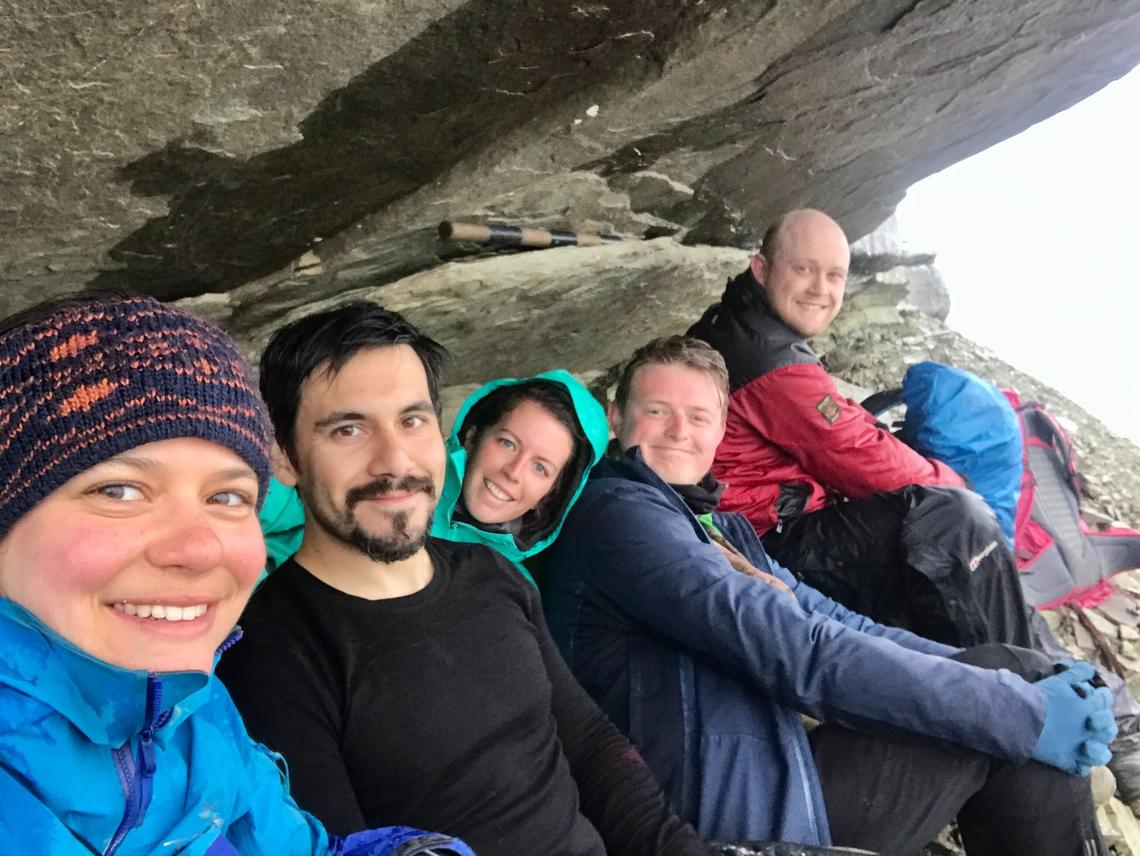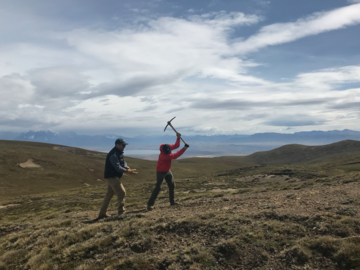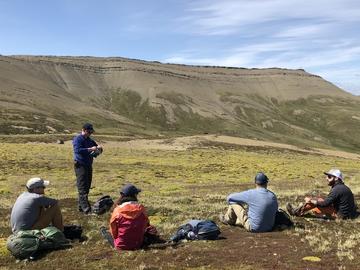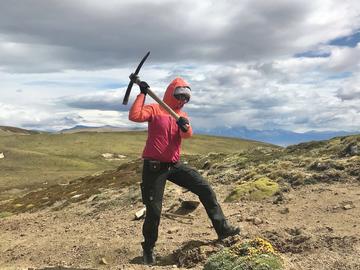Oct. 31, 2022
River deltas act as 'climate regulators' in storing carbon, UCalgary-led study shows

An international team led by the University of Calgary has shown that river deltas continuously remove and store significant amounts of carbon from Earth’s terrestrial biosphere over geologic timescales.
The team studied the sedimentary rock exposure of an ancient delta in southern Chile that formed 75 million years ago during the Late Cretaceous period, to quantify the past burial rates of land carbon in the marine environment.
Their study found the burial rates of organic carbon in the ancient delta are similar to the rates measured in modern deltas globally.
The delta that the team studied, in the Magallanes Basin, buried about 93 million tonnes of organic carbon from land over 0.1 to 0.9 million years, according to their study.
Deltas are widely recognized as important sites on Earth’s surface for storing organic carbon due to their location between land and ocean, says project leader Dr. Sophie Hage, PhD, lead author on the study.
“Our study further highlights that deltas provide a natural service, acting as climate regulators in drawing down atmospheric CO2 (carbon dioxide) over long timescales,” she says.
“As such, governments and citizens have additional motivation to protect, maintain and restore deltas in the context of climate change, sea-level rise, and sediment loss due to damming rivers.”
Hage did the work as a postdoctoral researcher at UCalgary, in the research group led by Dr. Stephen Hubbard, PhD, department head and professor in the Department of Geoscience in the Faculty of Science.
The team’s study is the first to use exhumed deposits of ancient deltas to quantify if, where and how much organic carbon is buried in deltas over millions of years.
Their study, “High Rates of Organic Carbon Burial in Submarine Deltas Maintained on Geologic Timescales,” is published in the journal Nature Geoscience.

Sophie Hage working at the field site in Chile, taking sedimentary rock samples.
Brian Romans
Deltas are important in the 'slow carbon cycle'
Carbon cycles are essential to sustaining life and regulating climate on Earth.
Land plants use carbon dioxide from the atmosphere and turn it into organic carbon to grow. Once plants and their consumers die, organic carbon is returned back to the atmosphere, in what’s known as the “fast carbon cycle” that occurs over days to years.
However, part of this carbon can escape the fast cycle and be transported by rivers to coastal oceans, where it can be buried in sediments — known as the “slow carbon cycle.”
“For the first time, we quantified how much carbon is buried in deltas over geologic timescales, and how much deltas contribute to the slow carbon cycle,” Hage says.
Modern deltas bury an estimated 0.3 per cent of the world’s CO2-equivalent emissions each year, or about one-third of Canada’s annual emissions, she says. “Although these numbers may seem like a small fraction of global CO2 emissions, this process continuously removes carbon from the terrestrial biosphere, and over long timescales this makes a difference.”
Fieldwork done in Andes Mountains
To measure the burial rate of organic carbon in the ancient delta in Chile, nine team members did five weeks of fieldwork in 2020, studying a rock succession exposed in the Andes Mountains.
Their work included surveying a mountaintop with an unmanned aerial vehicle, or drone, to build a 3-D model of the sedimentary rocks from which to measure dimensions of the ancient delta.
The team also dug a trench to capture 525 metres of thickness of sediments, taking samples every five metres to describe and analyze the rocks in geochemistry labs at UCalgary and the Geological Survey of Canada.

Rebecca Englert, Sebastian Kaempfe-Droguett, Sophie Hage, Tom Peploe, Dan Bell
Rebecca Englert
The team had to cut their fieldwork short by a few days because of the burgeoning COVID-19 pandemic, with Hage eventually returning to UCalgary in September 2020 to work in the isotope lab in the Applied Geochemistry Group, guided by lab manager Stephen Taylor. As became the norm during the pandemic, the team received data and discussed their work over Zoom.
“Sophie, who was the driving force for this team effort, came to Calgary with the idea to leverage our expertise in sedimentary geoscience to test a hypothesis she developed while studying carbon storage in modern delta environments in coastal British Columbia,” Hubbard says.
“Her perseverance and ability to rally the diverse team through this uniquely challenging time was impressive, making this impactful contribution that much more satisfying to have been a part of.”
Study required collaboration by UCalgary and international colleagues
Hage, who now works at Geo-Ocean (a joint research unit between the University of Brest and the Ifremer institute in France), says the study was a team effort that involved several UCalgary and international colleagues, in addition to herself and Hubbard.
The UCalgary members of the team included postdoctoral fellows Dr. Paul Nesbit, PhD, and Dr. Dan Bell, PhD; Tom Peploe (PhD candidate); Dr. Rebecca Englert, PhD; Dr. Dane Synnott, PhD; Georgia Sherstan (BSc student); and Dr. Omid Haeri Ardakani, PhD, adjunct associate professor in the Department of Geoscience and a Geological Survey of Canada scientist.
International collaborators included:
- Dr. Brian Romans, PhD, associate professor of sedimentary geoscience at Virginia Tech
- Geologist Dr. Sebastian Kaempfe-Droguett, a recent PhD graduate from Virginia Tech and a local of the Magallanes study region
- Dr. Miquel Poyatos-Moré, a lecturer in sedimentology at the University of Barcelona
The study was supported by a National Sciences and Engineering Research Council of Canada Discovery grant led by Hubbard, and by the Chile Slope Systems joint industry project.












